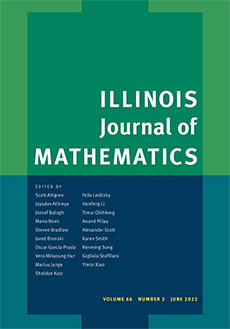Abstract
Given a pair of separable, real Banach spaces $E$ and $F$ and a centered Gaussian measure $\mu $ on $E$, one can ask what sort of Borel measurable maps $\Phi : E\longrightarrow F$ map $\mu $ to a centered Gaussian measure on $F$. Obviously, a sufficient condition is that $\Phi $ be linear. On the other hand, linearity is far more than is really needed. Indeed, it suffices to know that $\Phi $ has the property that \[ \Phi \biggl(\frac{x_1+x_2}{\sqrt2} \biggr)=\frac{\Phi (x_1)+\Phi (x_2)}{\sqrt2} \] for $\mathcal{W}^2$-almost every $(x_1,x_2)\in E^2$. In this article, I will first prove a structure theorem which shows that any map $\Phi $ which satisfies this property arises from a linear map on the Cameron–Martin space associated with $\mu $ on $E$. I will then investigate which linear maps on the Cameron–Martin space determine a $\Phi $, and finally I will discuss some of the properties of $\Phi $ which reflect properties of the linear map from which it is determined.
Citation
Daniel W. Stroock. "Maps that take Gaussian measures to Gaussian measures." Illinois J. Math. 54 (4) 1343 - 1355, Winter 2010. https://doi.org/10.1215/ijm/1348505532
Information





